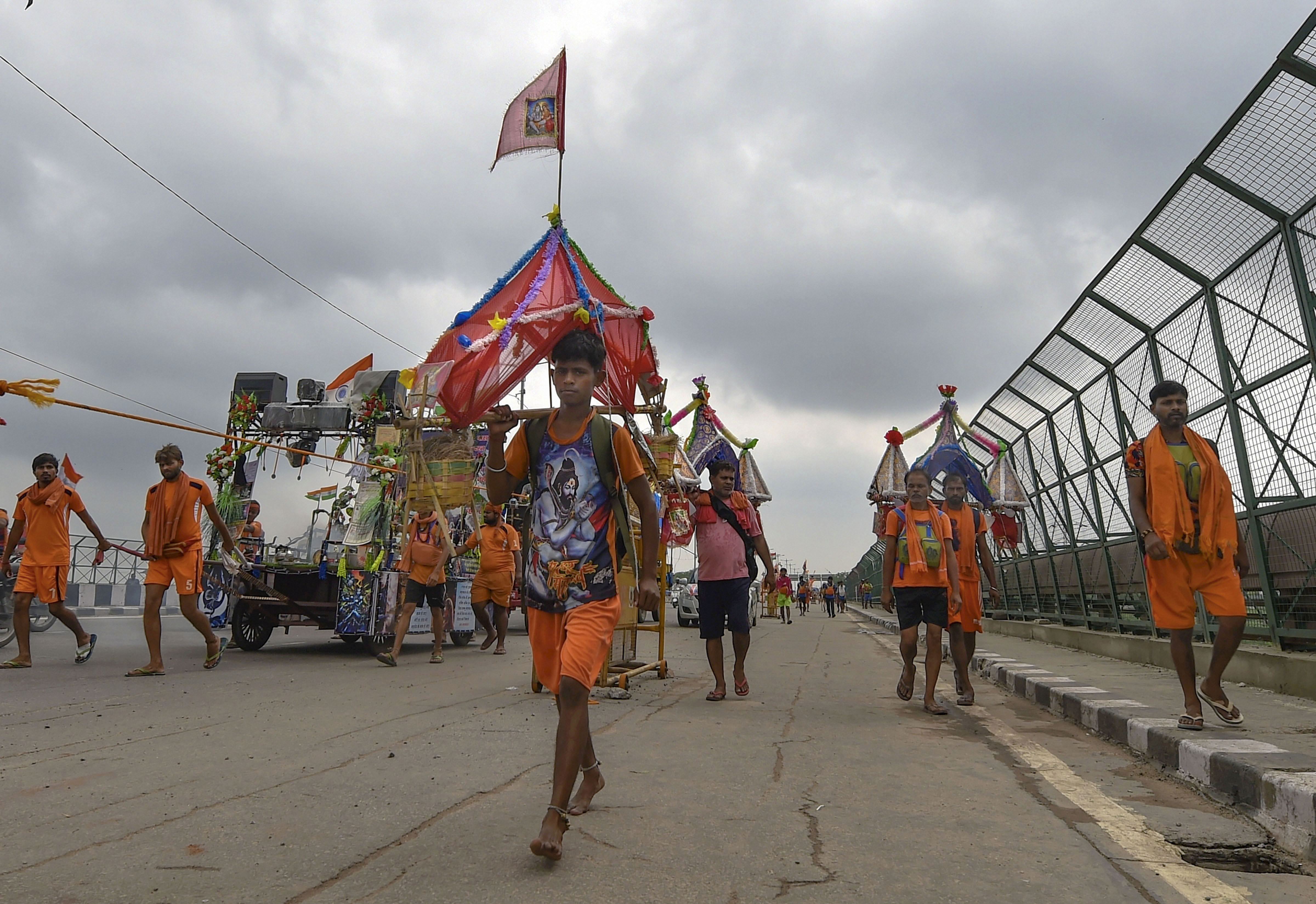
Who are Kanwariyas and why are they so often in the news?
While large-scale pilgrimages are common enough worldwide, and particularly so in India, the Kanwar Yatra witnesses an inordinate amount of rage and violence. This is due to the very nature of the pilgrimage

As many as 10 Kanwariyas died and 19 others got injured after a pickup truck carrying passengers got electrocuted in West Bengal’s Cooch Behar late on Sunday night.
A week ago, a 25-year-old army personnel from UP’s Sisauli town, who was taking part in the Kanwar Yatra, was killed as two groups of Kanwariyas clashed near Roorkee in Uttarakhand.
Violent incidents becoming routine
In 2018, a mob of agitated Kanwariya pilgrims in West Delhi’s Moti Nagar vandalised a car that had brushed past one of them on the congested road. As seen on video clips of the incident circulated on social media, the vandalism took place despite the presence of two police officials.
Also read: Khattar announces free pilgrimage to Sant Kabirs birthplace in UPs Varanasi
In another incident that year, pilgrims on the Kanwar Yatra vandalised a police emergency vehicle deployed to ensure their security in Uttar Pradesh’s Bulandshahr, and even chased the fleeing policemen.
Similar incidents of violence and vandalism have now become an annual affair during the Kanwar pilgrimage, especially in the North Indian states of Uttarakhand, Uttar Pradesh, Delhi and Haryana. Given that altercations related to the passage of Kanwariyas are reported every year, the police seem to be unable to get a handle on such incidents.
This year, the Kanwar pilgrimage resumed after a gap of two years due to COVID restrictions. Till July 25, more than three crore devotees had visited Haridwar to collect the holy Ganga water to be offered as ‘Jalabhishek’ to Lord Shiva, according to Uttarakhand officials.
The yatra used to be a small affair undertaken by a few until the late 1980s, when it started gaining popularity. Today, the Kanwar pilgrimage — to Haridwar in particular — has grown to be one of India’s largest annual religious gatherings. Heavy security measures are undertaken by the government, and the traffic on Delhi-Haridwar national highway is diverted for the period.
The annual pilgrimage
The Kanwar Yatra is an annual pilgrimage during Shravan, the fifth month in the Hindu calendar (July-August), during which devotees of Shiva visit pilgrimage centres in Haridwar, Gaumukh and Gangotri in Uttarakhand, and Sultanganj in Bihar, and carry water from the Ganga back home.
The pilgrims, called Kanwariyas, walk home barefoot carrying Kanwars. The word ‘Kanwar’ literally means a device used to fetch water made up of a long pole with two equal sized containers at both ends. The devotees travel long distances carrying the structure on their shoulders, and are called Kanwariyas.
In mythology, the pilgrimage is connected to ‘Samudramanthan’ mentioned in ancient Indian texts, where Lord Shiva consumed poison to save the world. The offering of the holy water is made to relieve Lord Shiva of the negative energy from the poison.
What triggers the rage?
While large-scale pilgrimages are common enough worldwide, and particularly so in India, the Kanwar Yatra witnesses an inordinate amount of rage and violence. This is due to the very nature of the pilgrimage.
Kanwariyas mostly come from the states of Uttar Pradesh, Bihar, Rajasthan, Delhi, and Haryana, as well as from Punjab, Madhya Pradesh, Chhattisgarh, Odisha and Jharkhand. It’s an arduous journey they undertake, and the conditions are rigorous.
They are expected to be extremely ‘clean’, since they are carrying Ganga jal in pots balanced on poles. This means a tough hygiene and diet schedule. The vessels are not to be placed on the ground in any circumstance. They are barred from touching, or being touched by, others. Plus they are barefoot.
The Kanwariyas walk across highways, roads and narrow lanes to visit the pilgrim spots. Despite the respective state governments’ best efforts, hordes of Kanwariyas often spill into busy roads and cause traffic jams. This in turn leads to much road rage, and hence violence.
Several voluntary organisations set up camps along the route to provide food and shelter to the pilgrims. Despite the efforts, the rigorousness of the yatra triggers violence even among the pilgrims.
Also read: Tepid response to Delhi govt’s free pilgrimage scheme to Velankanni church


